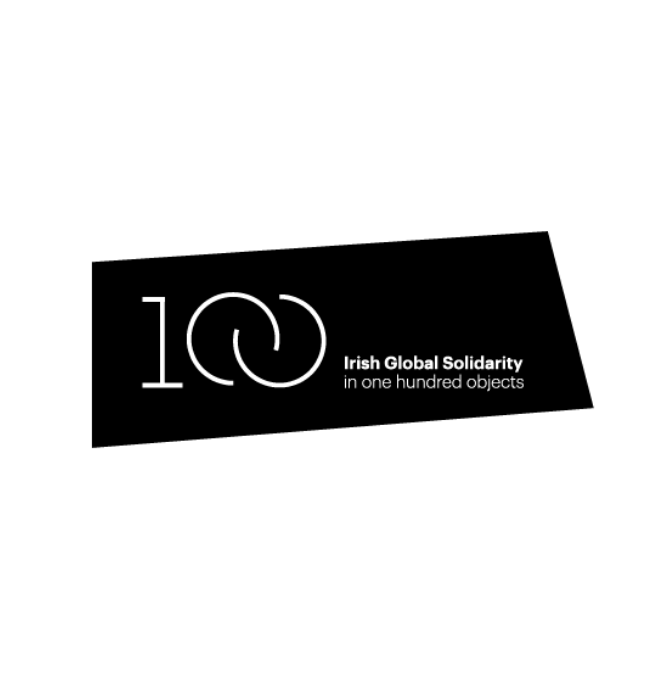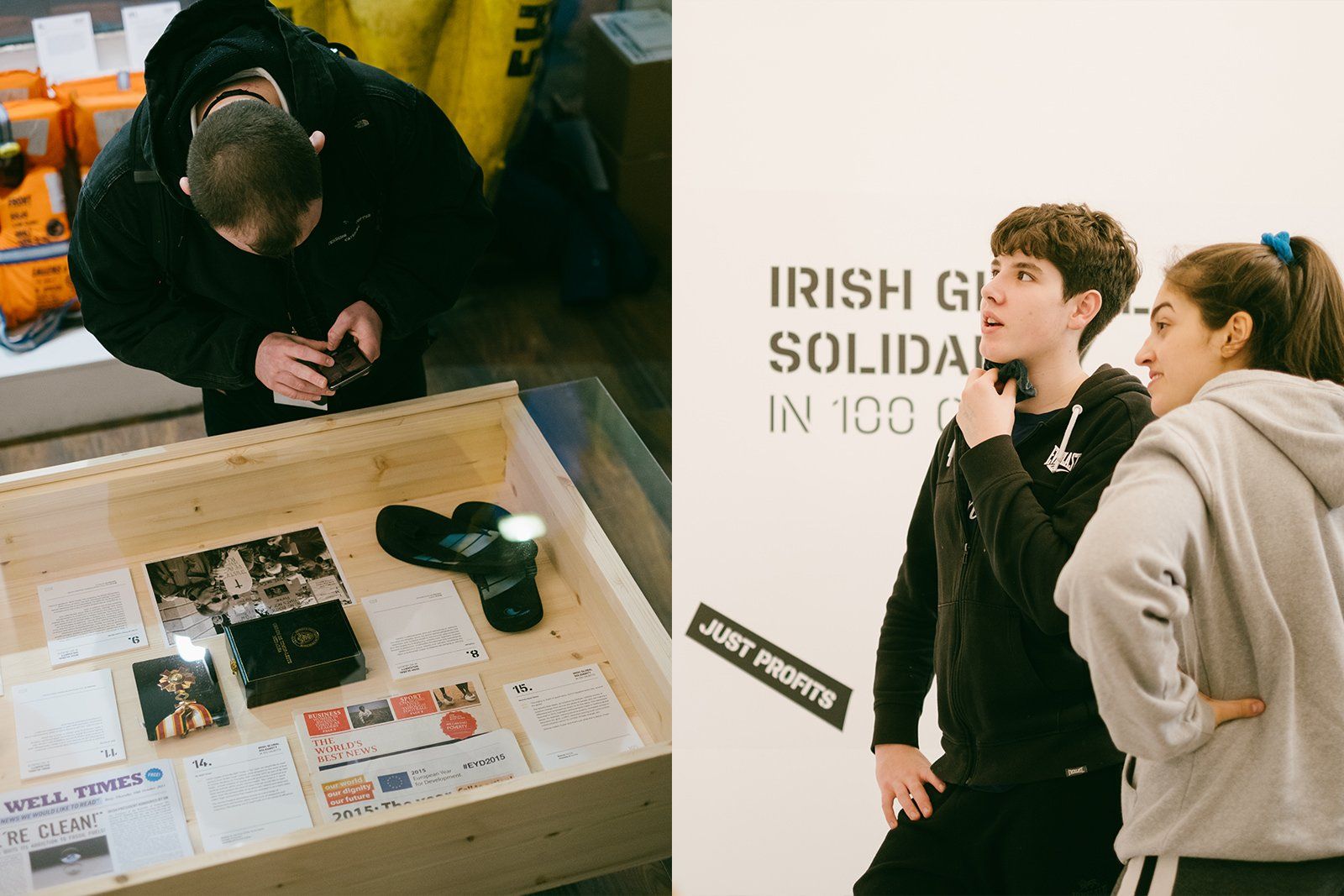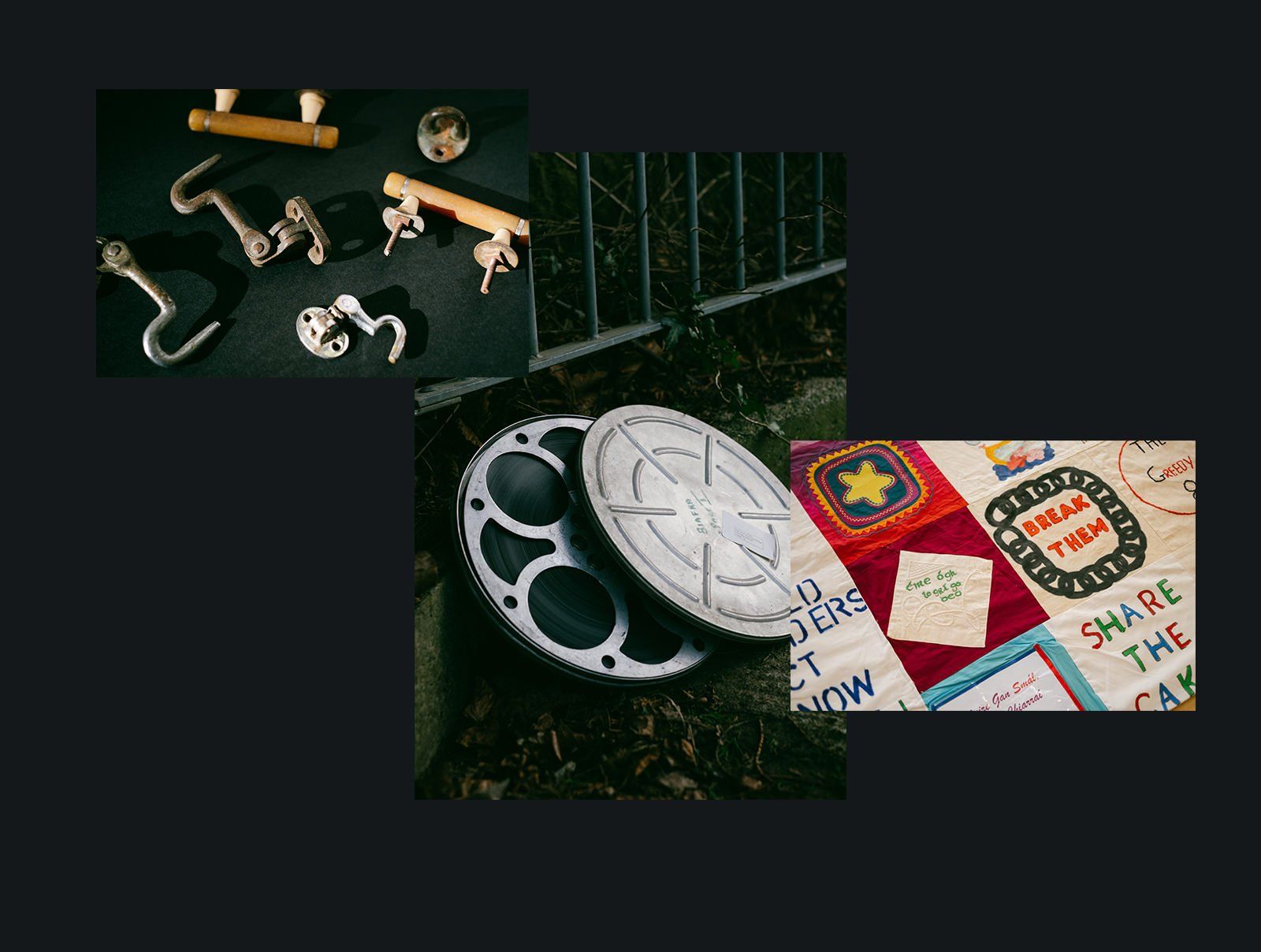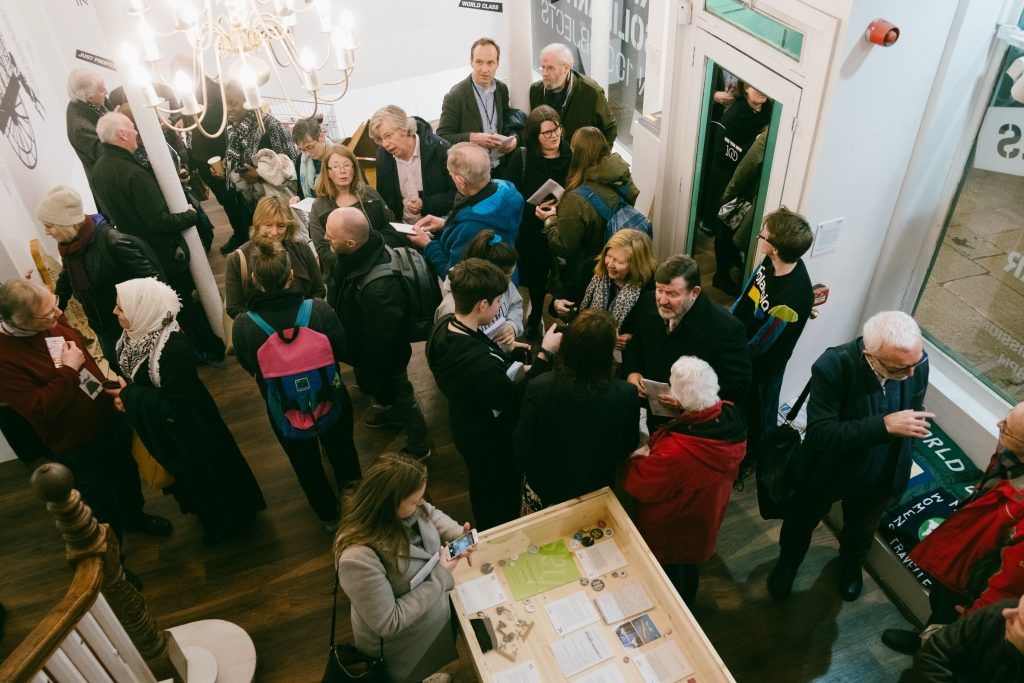Developmenteducation.ie: ‘Irish Global Solidarity in 100 Objects’ Exhibition
Irish Global Solidarity in 100 objects is a unique exhibition by developmenteducation.ie exploring Irish engagement with global cultural, political and social issues over the past 50 years. It ran as a five-day pop-up event in Dublin just before the first Coronavirus lockdown in March 2020 with more than 800 visitors and made RTÉ’s ‘Culture 10’ highlights of the week. L In September 2020, the exhibition was launched online by the Irish Minister of State for Overseas Development Aid and Diaspora, Colm Brophy and CEO of Trócaire, Caoimhe de Barra, as part of Culture Night
Items displayed include a boat used from 2008-2010 by Shell to Sea campaigners off Ireland’s west coast and original posters from the 1984 anti-apartheid Dunnes Stores strike. Nuts and boat fittings from the Rainbow Warrior ship sunk by French intelligence officers in 1985, the former flagship of the Greenpeace fleet, were donated to the exhibition by Green Party MEP Grace O’Sullivan, who was a crewmember of the vessel, on shore leave, at the time it was bombed in the Port of Auckland, New Zealand.
Exhibition visitors saw how change happens over time, across many campaign issues. The exhibition invited visitors to explore how different objects placed together could create a deeper and wider sense of social change than we normally might have access to. 100 Objects urged the viewers not to just ‘look’, but to engage personally. It encouraged them to think about how they can act for change, inspired by the innovative and courageous stories of activism featured in the exhibition. The final object on display, titled ‘The Individual’, was a reflective space where participants were invited to reflect on the idea that ‘exploring and acting for change in the world involves everyone, starting with you’. This was accompanied by a large mirror and an area to add comments on the experience, such as:
“The 100 Objects exhibition is brilliant. I think it should be made permanent and every child in the country should have to go and see it”
“That's grandad in that picture!”
Another important impact of the exhibition was that it brought a wide range of contributors into a c initiative. There was a year-long open call for submissions to the exhibition, attracting a diverse group of global activists with important stories to tell. Many came from the Development Education community and the adjacent fields of development and education, but others were politicians, visual artists, writers, musicians, trade union stewards, journalists and photographers, suggesting new synergies that could be harnessed in the future to enrich and strengthen Development Education campaigns and messages.
Capturing the footprint of the project as an interactive experience continues. Feedback was gathered through mechanisms built-in at various points, such as the 100th item personal reflection in the exhibition, taking note of overheard remarks by visitors plus the addition of the ‘100 + 1’ activity for education work in the teaching materials. These contribute to creative approaches in collecting evidence that bring a richness that is often absent in survey-dependent monitoring activities.
A lasting impact of the exhibition may be its contribution to history. The exhibition created opportunities for viewers to be curious, to critically engage with artefacts and to construct meaning from them. Many of the items loaned for the exhibition were personal items belonging to activists and therefore told a story in a way that differs from conventional historical narratives. ‘100 Objects’ contributes to how the history of activism will be understood.
Indicators of this include the publication of a chapter about the exhibition in I am a Man of Peace: Writings Inspired by the Maynooth University Ken Saro-Wiwa Collection led by Helen Fallon of Maynooth University, published in 2020, and the launch of a podcast series featuring the people behind the objects. Additionally, the exhibition demonstrates the power of public memory projects, with groups as far away as Australia getting in touch with developmenteducation.ie, interested in exploring similar exhibitions in their own global activism contexts.
Images:
- Irish Global Solidarity in 100 Objects Exhibition Logo, designed by Ruby Corcoran and Conor Clarke of Design Factory (picture 1)
- Visitors exploring the pop up exhibition (picture 2)
- Film reel containing footage exposing the reality of the conflict in Biafra, Nigeria filmed by Fr Mike Doheny and wooden replica landmines with a story to tell contributed by Concern Worldwide. Both objects included in the exhibition. (picture 3)
- A sample of objects included from the famous Rainbow Warrior to the One World Quilt (picture 4)
- Launch night of Irish Global Solidarity in 100 Objects exhibition (picture 5 and main page)
Credit: Joshua Mulholland and Ruby Corcoran











